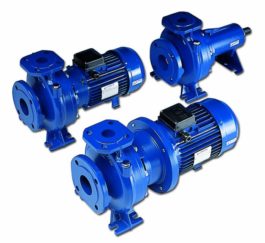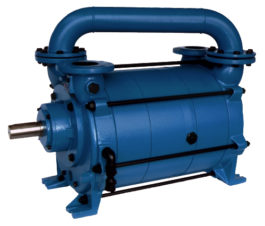Description
Introduction to Vacuum Assist Dewatering Pump Skids
A vacuum assist dewatering pump skid is a specialized system designed to remove water from various environments. These environments include construction sites, mines, and flooded areas. The system is mounted on a skid for mobility and ease of use. It combines a centrifugal pump with a vacuum system to handle challenging dewatering tasks. This setup ensures efficient water removal, even in conditions with high air content or deep suction lifts. Understanding its components, functionality, and applications provides insight into its importance across industries.
Core Components of the System
The vacuum assist dewatering pump skid consists of several key components working together seamlessly. The centrifugal pump serves as the primary mechanism for moving water. It uses a rotating impeller to create pressure, pushing water through the system. A vacuum pump, often a diaphragm type, assists in priming the system. This vacuum pump removes air, allowing the centrifugal pump to draw water effectively. A float tank, equipped with a float valve, regulates the vacuum process. A non-return valve prevents backflow, maintaining system efficiency. Additionally, a skid base, typically made of steel, supports all components. This base ensures portability and stability during operation.
Transitioning to the power source, the system is often powered by a diesel engine or an electric motor. The choice depends on the application and site conditions. Diesel engines offer reliability in remote areas without electricity. Electric motors suit sites with stable power sources and quieter operation needs. Control panels, including switches and gauges, monitor and manage pump performance. These components collectively ensure the system operates efficiently under varying conditions.
How the Vacuum Assist Mechanism Works
The vacuum assist mechanism is central to the system’s functionality. When the pump starts, the vacuum pump activates immediately. It creates a vacuum on the suction side of the centrifugal pump. This vacuum draws water into the pump, even from significant depths. The non-return valve closes the discharge side, preventing air or water from flowing backward. As water fills the centrifugal pump, the pumping process begins. Simultaneously, the float tank fills, and the float valve rises. This action shuts off the vacuum pump, preventing over-priming. The system can handle air-heavy water, making it ideal for wellpoint systems or snore conditions. This process ensures rapid priming and continuous operation.
Furthermore, the vacuum pump’s design enhances reliability. Diaphragm pumps, commonly used, are durable and require minimal maintenance. They can operate without oil, reducing environmental risks. The system’s ability to run dry for short periods, typically up to five minutes, adds versatility. This feature is crucial during startup or intermittent flow conditions. Overall, the vacuum assist mechanism enables efficient dewatering in challenging environments.
Design and Construction Features
The design of a vacuum assist dewatering pump skid prioritizes durability and mobility. The skid base is typically constructed from heavy-duty steel. This ensures the system withstands harsh conditions in construction or mining sites. The base often includes forklift pockets or lifting eyes for easy transport. Some models feature sound-attenuated canopies to reduce noise, ideal for urban settings. Lockable doors on the skid provide access to serviceable parts, simplifying maintenance.
Moreover, the pump’s wet end is designed to handle solids and debris. Impellers, often semi-open or vortex types, allow passage of solids up to 76mm in some models. This capability is essential for handling muddy or debris-laden water. The system’s construction materials, such as cast iron or stainless steel, resist corrosion and abrasion. These features ensure longevity in demanding applications like industrial waste pumping or flood control.
Transitioning to modularity, many skids are customizable to meet specific needs. Options include trailer mounting for enhanced mobility or additional filtration systems. Control systems can be manual or automated, with some offering remote monitoring. These design elements make the pump skid adaptable to diverse operational requirements.
Operational Considerations and Challenges
Operating a vacuum assist dewatering pump skid requires careful consideration of site conditions. Suction lift requirements must be assessed to ensure the pump can draw water effectively. The maximum suction lift is typically around 8.5 meters. Total head, including vertical lift and pipe friction losses, affects pump performance. Selecting a pump with adequate head capacity is crucial for efficient operation.
Moreover, solids content in the water influences pump selection. Pumps with larger impeller passages handle debris better, reducing clogging risks. Environmental regulations also play a role, particularly for discharge water. Contaminated water may require filtration or treatment before release. Geotextile bags or oil-water separators are often used to meet compliance standards. Power availability dictates whether a diesel or electric model is more suitable.
Challenges include potential cavitation if suction lift exceeds the pump’s capacity. Improper maintenance can lead to diaphragm or valve wear, reducing efficiency. Operators must monitor pressure gauges to prevent excessive backpressure. Regular servicing, such as cleaning filters, ensures consistent performance. Addressing these considerations optimizes the system’s effectiveness and longevity.
Environmental and Regulatory Aspects
Environmental considerations are critical when using vacuum assist dewatering pump skids. Discharge water from construction or mining sites can impact nearby ecosystems. Sediment-laden water may require settling or filtration to protect lakes or wetlands. Geotextile filter bags are commonly used to capture sediment. If the water contains oil or chemicals, additional treatment, like oil-water separators, is necessary.
Furthermore, regulatory compliance is mandatory. Local, state, and federal regulations govern dewatering activities. Permits may be required for discharging water into public waterways. Operators must ensure the system meets these standards to avoid penalties. The use of environmentally friendly diaphragm pumps, which avoid oil leaks, supports compliance efforts. Proper planning and adherence to regulations ensure responsible dewatering practices.
Maintenance and Longevity
Maintaining a vacuum assist dewatering pump skid is straightforward but essential for longevity. Regular inspection of the diaphragm and valves prevents unexpected failures. The centrifugal pump’s mechanical seals require periodic checks to ensure proper function. Cleaning or replacing filters prevents backpressure and maintains flow rates. The skid’s fuel tank and engine, if diesel-powered, need routine servicing to avoid downtime.
Additionally, the system’s robust construction contributes to its durability. Materials like stainless steel resist corrosion in harsh environments. Sound-attenuated models require maintenance of acoustic materials to preserve noise reduction. Proper storage, such as protecting the skid from extreme weather, extends its lifespan. With regular care, these systems provide reliable performance for years.
Conclusion
Vacuum assist dewatering pump skids are vital tools for managing water in challenging environments. Their combination of centrifugal and vacuum pumps ensures efficient priming and operation. The skid’s mobility, durability, and customization options make it versatile across industries. From construction to mining, these systems address diverse dewatering needs. Their environmental benefits, such as oil-free vacuum pumps, align with regulatory requirements. By understanding their components, operation, and maintenance, users can maximize their effectiveness. These pump skids represent a reliable solution for water management, ensuring safety and efficiency in critical applications.




